
Premium PDPs
Boost Your Revenue with Epic Product Copy Strategies!
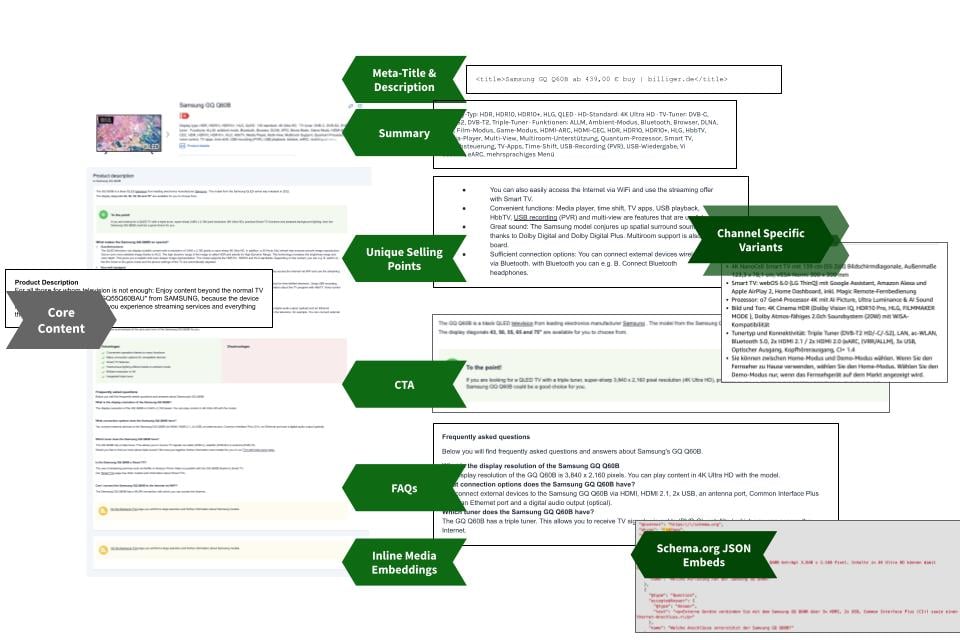
Think big
Perfect Your Product Descriptions and Elevate your Shop's Potential
In the realm of E-Commerce, the art of product description is crucial for success. The distinction between a simple core text and a carefully crafted, multi-part product copy can significantly impact your shop's potential. Let's take a closer look.
While a concise product description forms the foundation, an EPIC product description with all its components becomes an individual sales pitch.
Stand Out
You don't have to limit yourself to a simple product description.
Efficient Generation
Easily generate large amounts of text, including variants, simplifying the creation process, optimizing coordination, and saving valuable time and resources effortlessly.
Easy Maintainance
With Data-to-Text, managing diverse text elements becomes a centralized task, ensuring up-to-dateness and reliability. Effort remains constant even with an extensive product range, allowing for easy maintenance and scalability.
Unified Expertise
The data-to-text approach is characterized by the fact that all skills are incorporated before the text is produced. This allows specialist expertise to flow realistically into the texts.
By bringing together the competencies on a shared platform, data-to-text redesigns cross-team collaboration.
Quality Excellence
Ensure high content quality seamlessly with integrated product data using Data-to-Text systems. The quality achieved is on par with handwritten texts, allowing content teams to lead in implementing their ideas and quality standards.
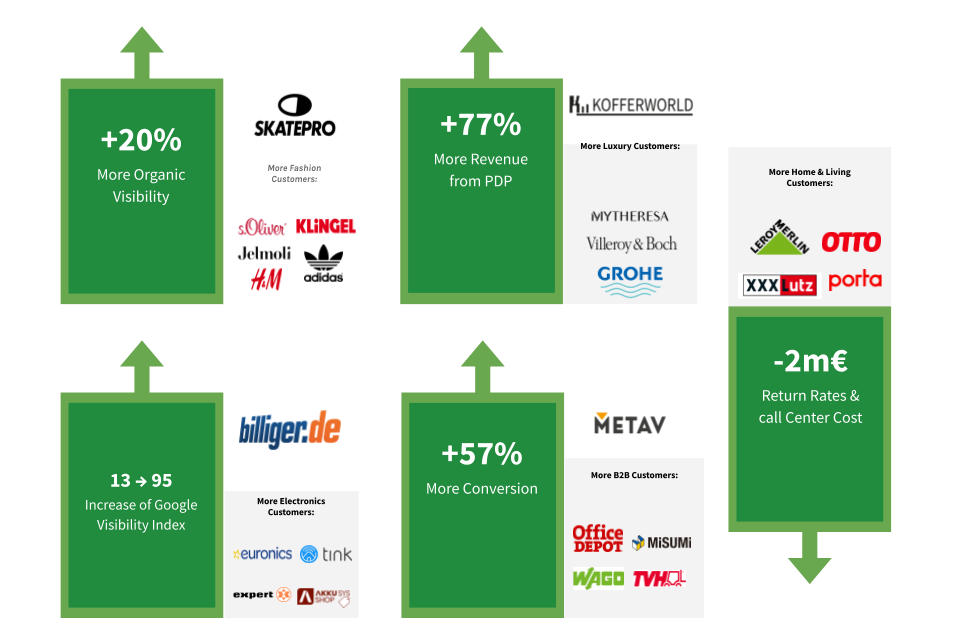
Measuring the Impact
The benefits of Epic Product Description
Epic Product Descriptions serve as an exceptional sales tool, demonstrating their impact in a variety of measurable ways to increase their effectiveness and reach:
- Enhance Google visibility
- Boost conversion rates
- Positively impact revenue
- Reduce return costs
Growth Driven
Components of Epic Product Description
Including different elements on a product detail page contributes to a more comprehensive and effective presentation, addressing different aspects of customer decision-making and optimizing the page for both user experience and search engine visibility.-
Product Communication
The direct product communication includes product title, the product description with unique selling points, feature specification and benefits.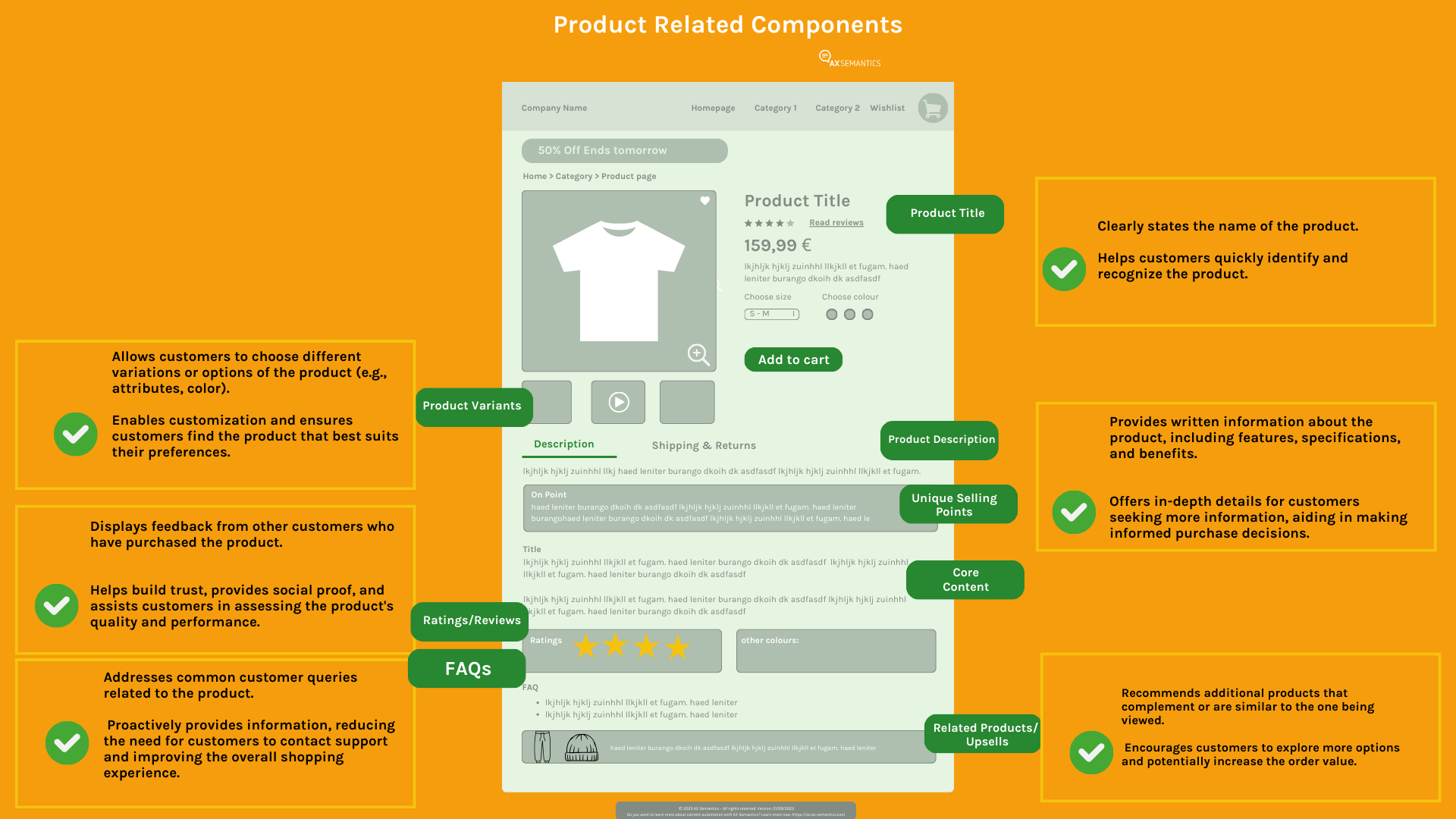
-
Service Oriented Components
A service-oriented short information can be generated for each product with its individual specifications.
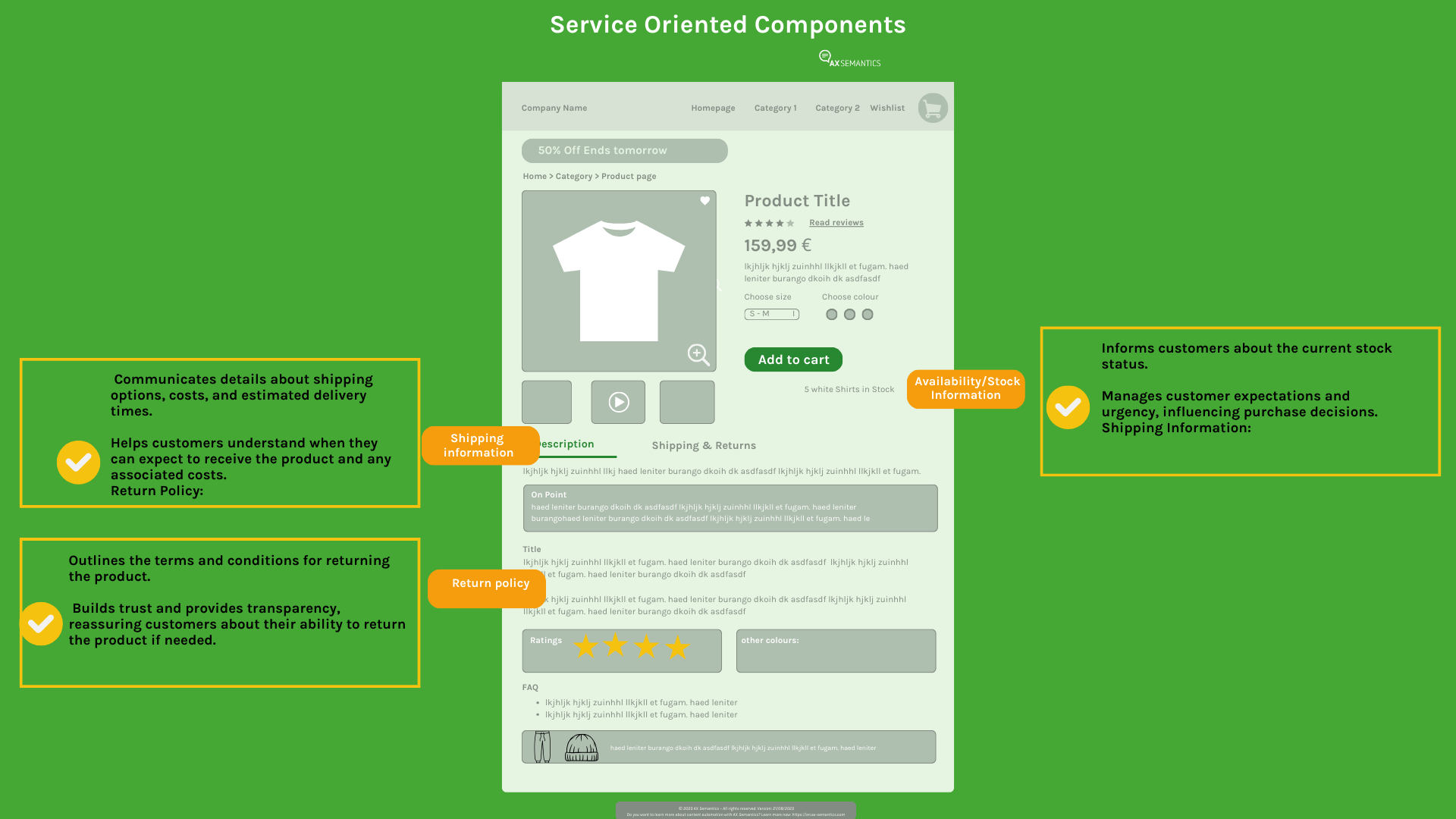
-
SEO Elements
Components that are not visible directly on the product detail page, such as SEO elements, can also be generated individually for each product.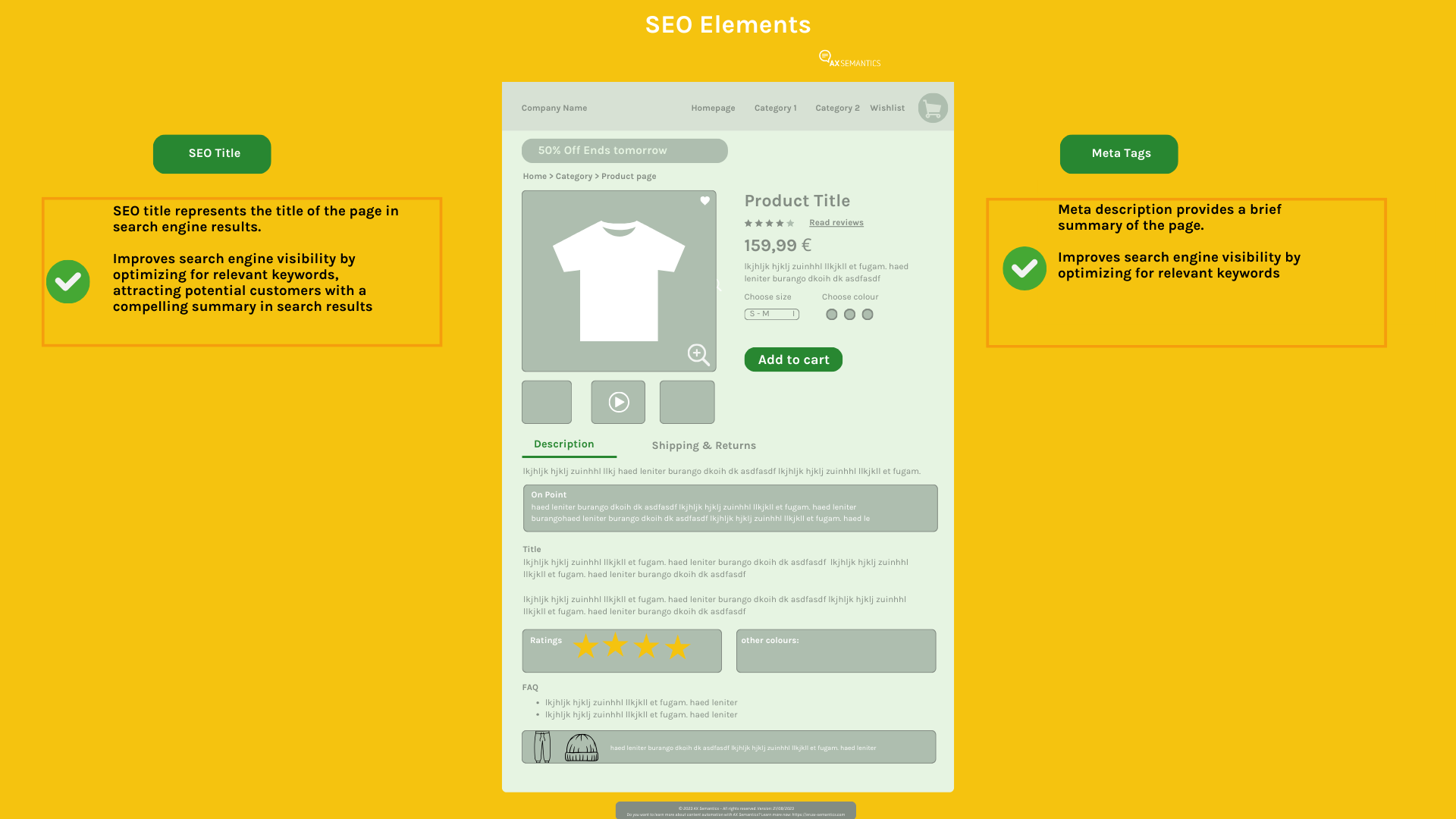
-
Channel Specific Variants
With the AX NLG Platform you can tailor product details based on the platform or channel where the product is being showcased (e.g., different descriptions for an e-commerce website and a social media platform) out of one project.
This ensures consistency across various channels while optimizing content for specific audience preferences and platform requirements.GPT%20vs%20AX%20Semantics%20(2).png?width=1920&height=1080&name=DE%20(Chat)GPT%20vs%20AX%20Semantics%20(2).png)



GPT%20vs%20AX%20Semantics%20(2).png?width=1920&height=1080&name=DE%20(Chat)GPT%20vs%20AX%20Semantics%20(2).png)
Case Study
The Product Advisor – billiger.de
The billiger.de team is committed to enhancing the online shopping experience by offering a comprehensive and user-friendly platform for bargain hunters. One notable advancement includes the transition towards a "product advisor": With Epic Product Description, the company now provides visitors with detailed guides, offering insights such as product advantages and disadvantages, essential information, and special tips, thus adding significant value to the user experience.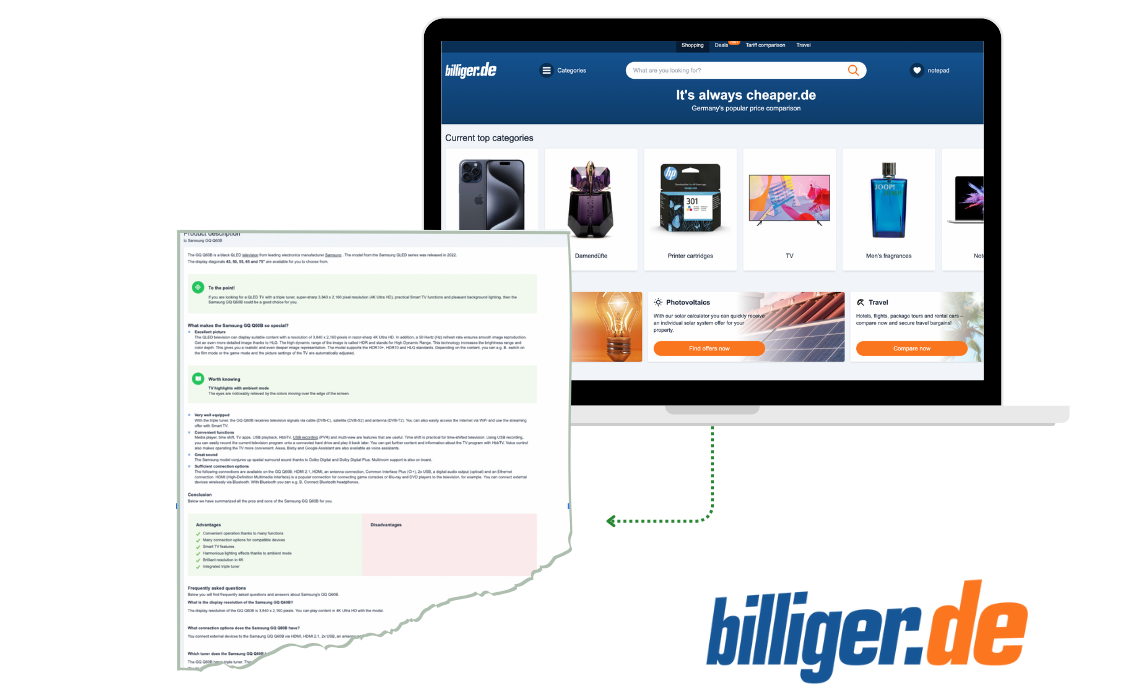
More Visibily
New Texts per Year
Updates per Year
Copy Writers
Be a Winner Like These Folks
Some Nice Things Our Clients Say About Us
Thanks to AX Semantics, generating product descriptions for a product group of 5,000 items and more becomes a breeze.

Niels Willaert
Product Marketing Specialist at TVH
With AX Semantics, we can take what we used to do internally with a lot of Excel and a lot of extra work and put it into an automated process, which of course scales completely differently.

Andreas Serra
Team Leader Engineering Data Service at Misumi
We use content automation to generate thousands of product descriptions in 17 languages.

Jakob Høy Biegel
CEO at Skatepro
We automate more than 100,000 advisory product descriptions per year.

Bernd Vermaaten
CEO of the brand billiger.de
We achieve 57% more conversions thanks to automated product descriptions.

Stephan Bayer
Managing Director, Metav Werkzeuge GmbH
With automated product descriptions we save a lot of time and achieve a high content quality.

Vanessa Wurster
Team Lead E-Commerce, AKKU SYS GmbH
Thanks to AX Semantics’ text automation software, we’ve generated more than 33,000 unique product descriptions in just 2 months.

Mirela Comor
Product Content Manager at Lyreco Germany
Insights & Resources

Miscellaneous
Product Page Optimization: Tips for Diversified Product Descriptions
High-quality product pages are essential for product page optimization. Learn how to improve your pr...
Keep Reading
Epic Product Descriptions
Unique Selling Points: a Must for Powerful Product Descriptions
What are good Unique Selling Points, and how important are they for excellent product descriptions? ...
Keep Reading
E-Commerce
Personalized Product Descriptions - A Revolution in the Customer Experience
Personalized product descriptions are a revolution and at the same time the key to a successful cust...
Keep Reading